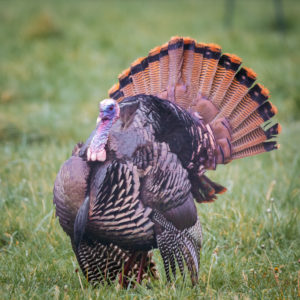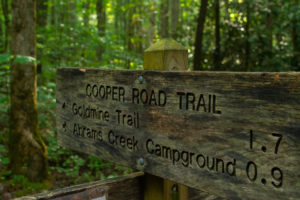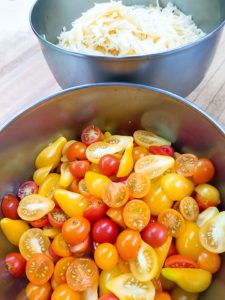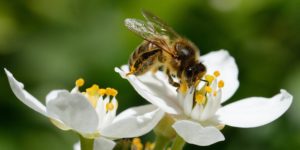August 31, 2020
National Park Campgrounds and Picnic Areas to Reopen
September 3, 2020 marks the reopening day for campgrounds and picnic areas in the Great Smoky Mountains National Park (GSMNP). The reopening follows guidance from the White House, Centers for Disease Control and Prevention (CDC), and state and local public health authorities. The National Park Service is closely monitoring the covid-19 pandemic. They have developed a phased approach to increasing park access.
Campgrounds and Picnic Areas
The following areas will be accessible beginning on September 3:
- Abrams Creek, Balsam Mountain, Big Creek, Cataloochee, and Cosby Campgrounds
- Big Creek, Cataloochee, Round Bottom, and Tow String Horse Camps
- Heintooga and Look Rock Picnic Areas
- Little Greenbrier Road
Please remember that the following areas continue to be open:
- All Park trails, backcountry campsites, and shelters
- All visitor centers and restrooms
- Cable Mill in Cades Cove and Mingus Mill near Oconaluftee
- Cades Cove, Elkmont, Deep Creek, and Smokemont Campgrounds
- Anthony Creek Horse Camp
- Big Creek, Cades Cove, Chimney Tops, Collins Creek, Cosby, Deep Creek, Greenbrier, and Metcalf Bottoms Picnic Areas
- Spence Cabin and all Picnic Pavilions for day-use rental
- Concession operations: LeConte Lodge, Sugarlands Riding Stables, Cades Cove Riding Stables, Cades Cove Campstore, and Smokemont Riding Stables
The Appalachian Clubhouse remains closed.
According to Park Superintendent Cassius Cash, “We are pleased to be able to offer more opportunities for visitors to disperse and recreate in the park in time for the Labor Day holiday and our busy fall season. The Park has experienced record visitation this summer and we want to remind everyone that we need your help more than ever to keep the Park protected and clean.”
Park officials suggest you choose trails and overlooks without congested parking areas. Visiting early in the morning will help you view the Park in less crowded conditions. Remember to maintain distance from other visitors and wear a face covering when you cannot maintain physical distance.
Buckhorn Inn guests may ask staff to recommend some of our favorite hiking trails. We also can pack you a hearty sack lunch for $10 to enjoy at one of the picnic areas.
August 25, 2020
Cherry Tomatoes Fresh From Buckhorn Inn Garden
Don’t you love those luscious, sweet, end-of-summer cherry tomatoes? They pop in your mouth with such bright flavor. We have grown several varieties of these small tomatoes here at Buckhorn Inn. One of the most prolific this year was our heirloom Yellow Pear tomatoes. They fruit is bright yellow and they are deliciously tangy. We also have had great success with Shimmer, Honeycomb, Napa Grape, Mighty Sweet, and Black Pearl. They look beautiful served together in a salad! Our chefs also have enjoyed using them in “farmer’s omelets” showcasing our garden-fresh veggies. http://www.burpee.com/vegetables
Tomato History
Food historians believe cherry tomatoes are a modern version of South American wild tomatoes. According to archeological evidence, Central American farmers grew the first domestic strains of these small tomatoes. The Incas and Aztecs farmed tiny pea-size fruit around 700 A.D. You may not realize that large tomatoes are actually a mutation of the cherry varieties. The first cultivated tomatoes were berry-small and housed only two cavities for seeds.
We do not know who gets credit for bringing tomatoes to Europe. The first description of small tomatoes in print appears in a 1623 illustrated book of plants. The fruits reached wild popularity in the 1970s when British chain Marks & Spencer worked with local growers and food scientists to develop a new cherry tomato that was very sweet and shelf-stable.
We hope you are enjoying a bountiful crop! If you have more tomatoes than you can use fresh, why not oven dry some of them? That is what we have been doing. These little flavor bombs are great for salads, pasta topping, or snacking. They burst with intense tomato flavor. And it couldn’t be more easy.
Oven-Dried Cherry Tomatoes
35 cherry tomatoes
1 Tablespoon of salt
Herbs, optional
Preheat oven to 200 degrees. Line a baking sheet with parchment paper. Cut tomatoes in half horizontally and place on the sheet, sides touching and cut side up. Sprinkle with salt and let sit about 30 minutes. Sprinkle with chopped basil, oregano, or parsley. Bake for 2 1/2 to 3 hours until the halves are about 3/4 of their original size and are deep red in color. You may keep them for a month or so in an airtight container in the refrigerator or they may be frozen.
August 17, 2020
Wild Turkeys Alive and Well in Tennessee

A male eastern wild turkey spreading his tail feathers on an overcast morning in Cades Cove, Tennessee
At Buckhorn Inn we have two wild turkeys who frequent the area below one of our bird feeders. We were interested to learn more about them, and thought you might be, too.
According to the Tennessee Wildlife Resources Agency, http://www.tn.gov/twra/wildlife/birds, wild turkeys are the largest birds nesting in Tennessee. These birds were a very important food source to Native Americans and early settlers. Unfortunately, over-hunting and land clearing reduced the numbers of this species. Wildlife management techniques have reestablished the birds through their historic range.
The birds are found in mature woodlands or fields. They eat acorns, nuts, seeds, fruits, insects, buds, fern fronds, and salamanders. The males begin strutting to attract females in late winter and early spring. The female, with no help from the male it should be noted, makes a ground nest and lines it with with leaves and grass. The nest is usually at the base of a tree or bush and hidden by thick vegetation. The female lays anywhere from 7 to 14 eggs and incubates them for about 28 days. The young leave the nest soon after hatching. The male young stay with the female until fall while the females remain with their mother until spring.
Fun Facts about Tennessee Wild Turkeys
- There are approximately 300,000 of the birds in Tennessee.
- The average male weighs 16.2 pounds and the female weighs 9.2 pounds.
- The male provides no care to the young.
- Several females and their broods may form flocks of 30 or more birds.
The birds can be seen throughout the Great Smoky Mountains National Park, most often in the lower elevations. They roost in trees, so you are less likely to see them in the evening. Good places to spot them are the open fields near the Sugarlands Visitor Center and the Cades Cove Loop Road. Or you may just see them hanging around Buckhorn Inn!
August 10, 2020
Sangria Is A Perfect Summer Refresher
Several guests have mentioned how much they used to enjoy the Chef’s Inspiration Sangria as a weekend special at Buckhorn Inn. While current challenges have prevented us from serving it this summer, we are prompted to share recipes with you.
Sangria is a drink which originated in 18th century Spain. The original version used red wine, hence the name which literally means “bloodletting” in Spanish. The punch was poplar in colonial America, but largely disappeared in the States by the early 20th century. The iced version of the drink was reintroduced to the U.S. through Spanish restaurants in the 1940’s. It achieved a wider popularity during the 1964 World’s Fair in New York.
Each region of Spain has its own version of this wine and fruit punch. The traditional version is made with red wine with a variety of fruits and sweeteners. Spanish Rioja wine, made from the Tempranillo grape, is a good choice. Recently a version of the drink made with white wine has become popular. Any type of dry white wine may be used. http://www.foodandwine.com/drinks/
Red Wine Sangria
1/2 cup water
1/2 cup sugar
2 bottles of dry red wine
1/2 cup brandy
1/2 cup orange juice
2 limes, sliced
1 lemon, sliced
1 orange sliced
Club soda
Ice cubes
Bring water and sugar to a boil. Cook 3 minutes or until the sugar is dissolved. Cool. In a large pitcher stir together wine, brandy, orange juice, and sugar syrup. Refrigerate, covered overnight. A few hours before serving, stir in sliced fruit. When ready to serve, fill glasses with ice. Fill glass 2/3 with sangria and top off with club soda. Garnish with fresh fruit and mint leaves. About 12 servings
White Wine Sangria
1 cup water
1 cup sugar
2 bottles dry white wine (unoaked Chardonnays or Chenin Blancs are good choices)
1/2 cup orange liqueur such as Cointreau
1 lemon, sliced
2 limes, sliced
2 oranges, sliced
Club Soda
Ice Cubes
Bring water and sugar to a boil. Simmer 5 minutes. Cool. Stir syrup, wine and liqueur together, cover and chill. Before serving pour wine into a pitcher. Stir in fruit. Serve over ice, topping each glass with the Club Soda. About 12 servings.
These recipes make great starts for your own experiments with different wines and fruits. We would love to see the recipe you develop for your very own house sangria!
August 3, 2020
Pittman Center Has Become A Bee City!
Our community of Pittman Center has joined communities across the country to call attention to an important issue. Affiliates of Bee City USA are working to protect pollinators. So far 111 cities have signed up to raise awareness, establish and enhance habitats, and celebrate the efforts of volunteer leaders.
Honey bees and other pollinators are facing threats at increasing rates. According to Bee City USA http://www.beecityusa.org one of every three bites of food that we eat is thanks to insect pollination. In fact, 90% of all plants and trees rely on pollinators for the survival of their species. That is why we must be concerned with bees disappearing because of loss of habitat, diseases and parasites, and inappropriate pesticide use. Some experts estimate that U.S. honey bee populations are declining at an annual rate of as much as 44%.
Pittman Center Approves Resolution
In May 2020 the town of Pittman Center approved a resolution naming the town an affiliate of Bee City USA. The town’s Tree Board will oversee the Bee City USA program. The town will host at least one educational event or pollinator habitat planting each year to showcase the community’s commitment. There also are plans to create or expand a pollinator-friendly habitat on public and private land. The Tree Board also will create and adopt an integrated pest management plan. This plan will be designed to prevent pest problems, reduce pesticide use, and expand the use of non-chemical pest management methods.
At the Buckhorn Inn, we are delighted with this new program. This is the second summer for our honey bee hives. We report that Queens Violet and Catherine and their minions are healthy and happy. You can watch them at work in our vegetable and flower gardens. When the nectar is flowing they are especially busy in St. Cordelia’s garden. We hope you have a chance to watch them at work.








Gatlinburg Weather
Click for weather forecast